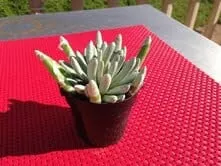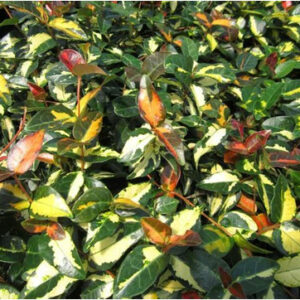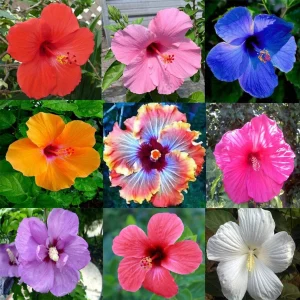No products in the cart.
Yes, you are looking at the image of the tree peony, and already you’re a sucker for them. These herbaceous peonies can be woody stems or even intersectional.
Still, the only thing that matters is that they are lively spring to early summer bloomers with whom you will fall in love.
Another fabulous thing is these are long-lived shrubs.
Plant Name: Paeonia suffruticosa
Other Name: Tree peony
Plant Type: Shrub
Native Areas: Asia
Light Requirement: Full sun to partial shade
Watering: Moderate
Fertilizer: Compost
Toxicity: Non-toxic
Temperature: Warm temperatures
Propagation: Seed, rootstock, division
Growth: 3-5 feet tall and 3-4 feet wide
Soil Type: Loamy
USDA Hardiness Zones: 4-8
More About Tree Peonies
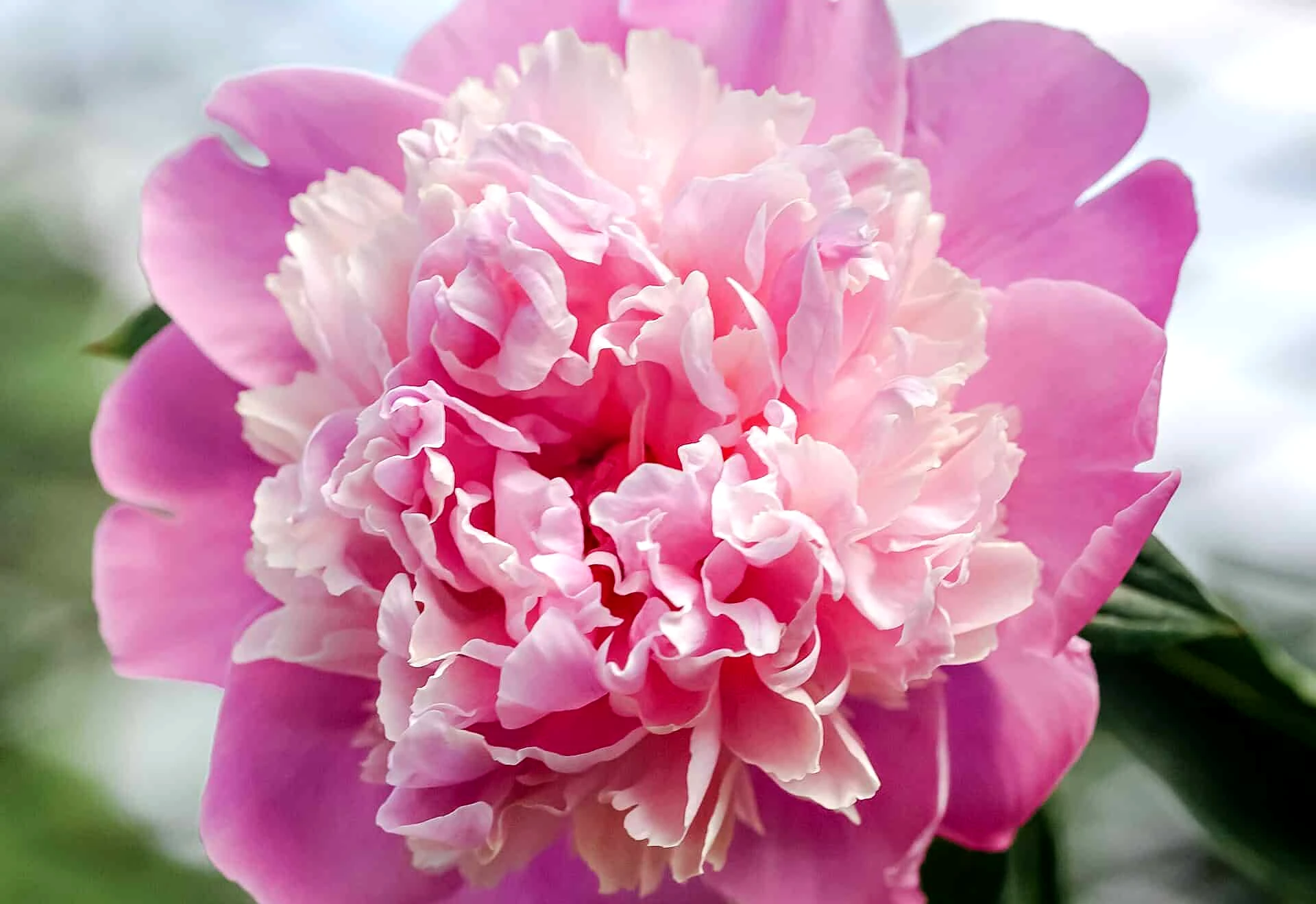
Tree peonies, also known as woody peonies, are slow-growing perennials that are shrubs. You find them with single or double-petaled flower buds. This outdoor plant was hybridized initially in China about 1,500 years ago.
Many tree peony hybrid groups are from the Japanese and Chinese Paeonia x suffruticosa, Paeonia x rockii, and the Lutea hybrids. Still, the care instructions are the same. The tree peony belongs to the Paeonia genus, which can be herbaceous, and shrubs are grown for the ornamentals of the flowers.
The woody stem peonies come from China and are derived from both the Paeonia x suffruticosa and Paeonia delavayi, another species from China. Still, you find many tree peonies with different labels, from their species to hybrid ones.
Still, technically, it is not a woody stemmed plant but a shrub. So, how do you understand this plant? You do this by understanding the main hybrid groups.
Paeonia x suffruticosa
The classic Japanese and Chinese peony, known as the Moutan peony, is a diverse cultivar with flowers ranging in many colors. You find a maroon, red, pink, and purple palette to bicolor. In the group, species grow upright or have a spreading habit. The tree peony bloom is the most fragrant found.
Paeonia x rockii
The Rock’s or Gansu tree peonies are hybrids from the Gansu region, which is chilly and arid. These deciduous shrubs have purple flowers with flared maroon centers near the stamen. These plants are heat, cold, and drought-tolerant.
Paeonia delavayi x Paeonia x suffruticosa
The Lutea hybrids are the leading group to create peony hybrids in the horticultural circle. You find shrubs with bronze, red, copper, and yellow flowers. But these trees’ stems die back to the ground in winter and bloom with new spring shoots. Once established, they live for many generations.
Still, tree peonies do not have a long bloom time, and it is only five to ten days. The blooms appear on the old woody stems of the Moutan peony and Rock’s peony. The flower shapes vary from one cultivar to another, from single, semi-double, to double.
The size of blooms also varies, but on average, the flowers are between 7 to 10 inches across. The fragrance also ranges, and all the varieties attract pollinators like bees and butterflies. The plant is a slow grower, on average six inches a year.
The tree peony is a deciduous shrub that loses its leaves in winter, but the winter stems allow it to survive in the USDA hardiness zones 4 to 8. Compared to herbaceous peonies, the tree peony does not need winter dormancy to flower.
Still, it does need a resting period for a few weeks in temperatures below 40°F. You can now find over 600 cultivars with beautiful flowers available commercially.
Paeonia Suffruticosa Care Tips

The tree peony follows a pattern in the first year; it will sleep, then in the second year, it starts to creep, and finally, in the third year, it leaps. So, they first grow a root system and develop shoots in the 2nd and blooms in the 3rd or 4th year. Hence, the bloom cycle varies over the years depending on the propagation.
The Best Spot to Plant Tree Peonies
Tree peony plants need early to late morning sun and dappled shade during the afternoon. So, full sun to partial shade works for most cultivars in the Paeonia genus. Still, we recommend checking your cultivar’s specs for the best requirement.
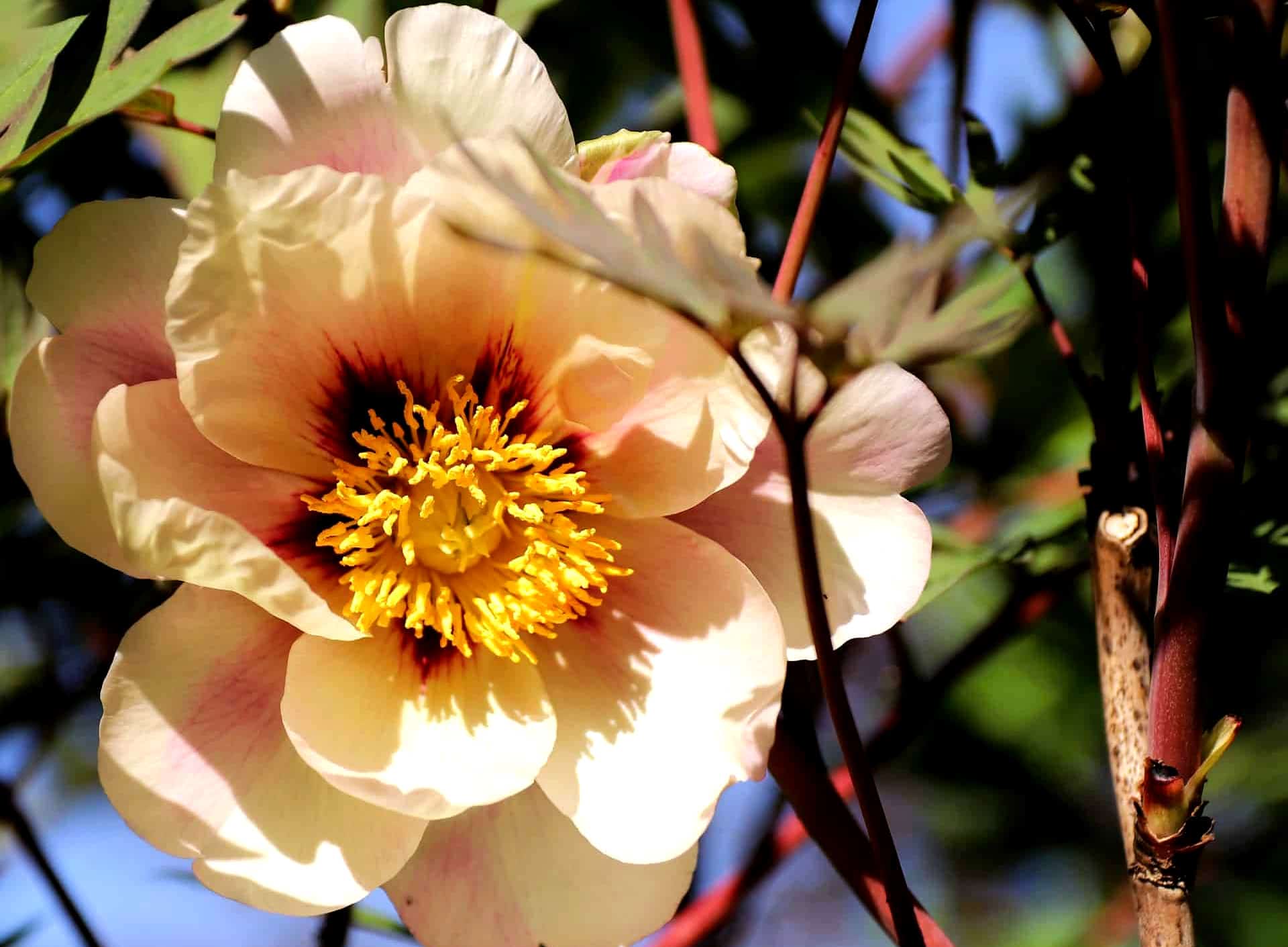
If you live in warmer climates, it will need more shade but still needs at least four hours of daily sunlight. When you plant tree peonies, they should reach a mature size within ten years. But the size, spread, and growth habit depend on the cultivars you have.
Tree Peonies Soil
Tree peony plants need well-drained soil with pH levels between 6.5 and 7.5. With constant soggy ground, the roots will rot. So, growing tree peonies on a slope are best in full sun with light shade.
Doing this helps excess water to drain away from the plant. If you are concerned about good drainage, you can amend the soil with grit, like horticultural sand or perlite.
If you have sandy loam soil, you can amend it with some organic matter.

Watering Tree Peonies
Whether you have herbaceous peonies or woody stems, they do not need much watering. Mature tree peony plants that are established enjoy deep watering, allowing the moisture to drain away from the roots.
You can water when the top few inches of the soil surface are dry. Or water them without rain but try not to overwater them. Another notable thing is your new tree peony plants will not thrive in a pot and are best planted in a raised bed in the landscape.
Another notable thing is water around the base of the plant and not overhead, as high humidity can lead to crown and root rot.
Temperature and Humidity
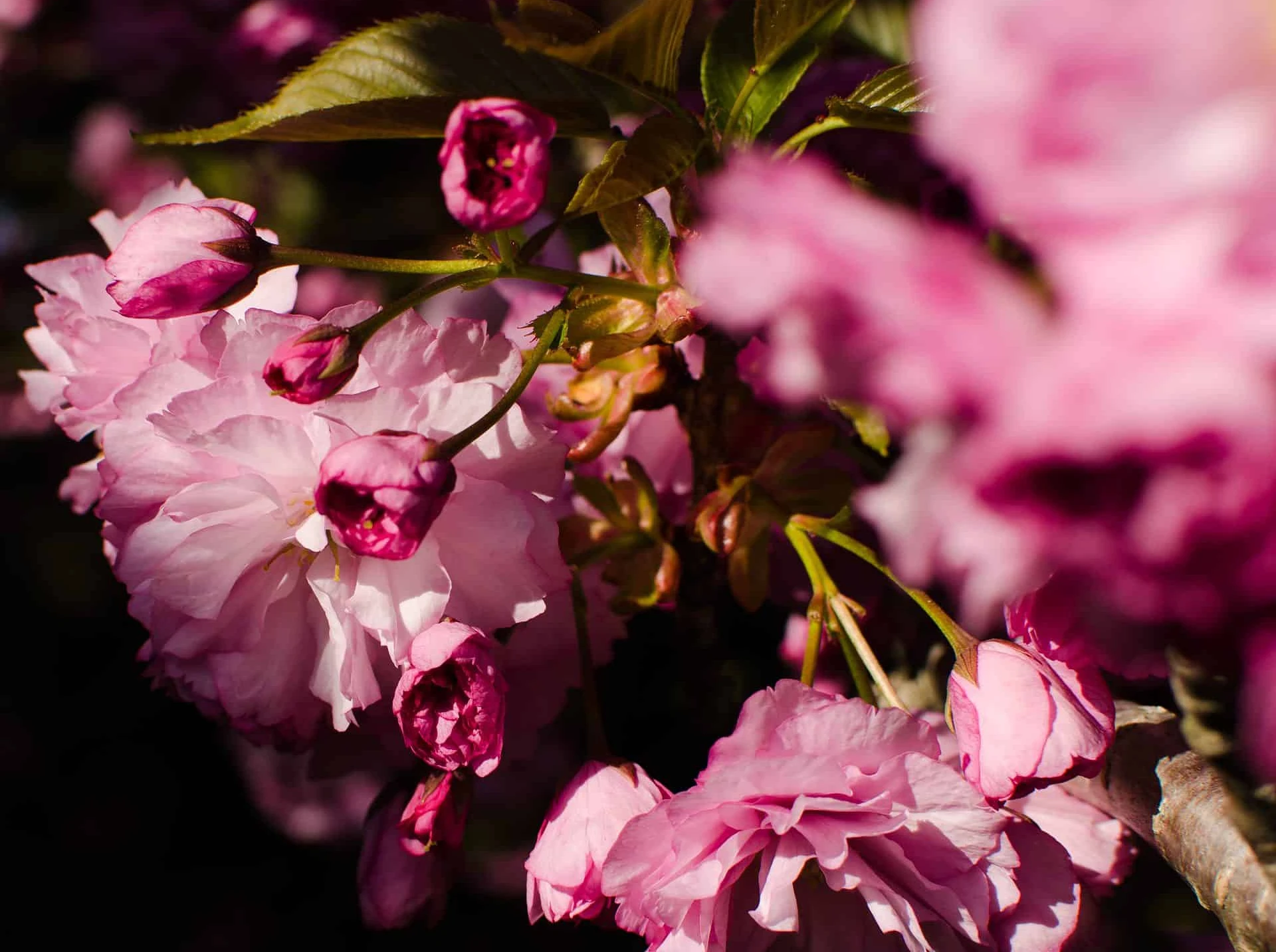
Unlike herbaceous peonies, your tree peony does not have chilling requirements. These include the herbaceous rootstock and grafted plant. Still, they need to rest for a few weeks in temperatures below 40°F, allowing them to bloom in spring to early summer.
Compared to herbaceous peonies, the tree peony also needs no staking, but it helps plant tree peonies protected from the wind. Adding organic mulch can provide herbaceous shrubs and tree peonies with winter protection for fall care.
Fertilizing Most Tree Peonies

Fertilizing new plants to mature tree peonies varies based on where you live. Still, the best time is early spring when the growing season starts. After that, you can provide your peony flowers with organic compost or well-rotted manure to fertilize them.
Then, water deeply and repeat it after eight weeks to help them thrive. To protect the roots, the same can be done six to eight weeks before the first winter frost. When you notice the blooms fade, it helps to deadhead them unless you want them to mature to collect seeds.
Light frost does not harm your tree peony, but prolonged ice in early spring can cause damage to the buds and new shoots. To prevent this from happening, you can cover your peonies with a frost cloth for protection.
Still, please do not place the cloth directly on your plant, as it can damage the flower buds.
How to Prune Tree Peonies
Pruning tree peonies is not done regularly, but it helps to check your plant annually to remove dead branches or weak, unproductive growth. We recommend using sterilized garden shears and careful pruning. These hybrids bloom on the woody stems; you do not want to cut them away.
Pruning is best done in early spring before you see new growth emerging. You can create a healthy canopy by removing branches rubbing against each other for tree peonies. For example, you can remove branches growing straight up or toward the ground.
Please cut back the dead branches until they reach new growth. The herbaceous peonies die back to the ground in the cold winters. Cut old dead stems back to the ground and clean up around the area. If you have a grafted rootstock, it can sucker from the herbaceous rootstock.
It happens when the planting depth is shallow. Hence, it is best to remove the suckers to prevent the herbaceous rootstock from taking over your tree peony. You see the suckers in red color on herbaceous peonies, but it is dull red on your tree peony.
If you are unsure, wait until the suckers develop leaves. The foliage of the tree peony is divided and has three lobes found on each half end. The tree peonies’ leaves differ, unlike herbaceous peonies that are ovate and pointed.
Using a sharp knife, the best time to remove the suckers is in late spring.
Propagating Tree Peony
Most plants in this family can start in different ways. Gardeners recommend starting your tree peony from seeds. Still, it can take two years for germination to take place.
Another concern is that hybrid seeds do not grow true to the type. But can resemble the parent plant. Still, even cuttings are intricate when propagating the plant.
Hence, it helps to purchase a graft union one or bare-root plants from garden centers or use division to branch layering.
How to Grow Tree Peonies From Seed
The seeds from tree peonies are commercially available from the dried seed pods. The seeds have a hard outer shell. Therefore, the air and water must reach the embryo’s inside for the seed to germinate.
You can scarify the seeds using some medium grit sandpaper to help speed up the process. Gently rub the outer coat about three times. But if you can get your hands on freshly harvested seed pods.
After the tree peony blooms and flower buds fade, you see the fruit on the tree to collect from late summer to the start of fall.
The pods become dark brown and open. Remove them from the pod carefully, and they will have a black, tan, or brown color.
Place the seeds in a plastic zip-top bag filled with damp horticultural sand.
Next, place the bag on a heating pad to maintain an 80°F temperature.
You will see root growth in about 12 weeks, and fresh, pre-sprouted seed must be planted in late fall as it needs cold stratification.
When planting the seed, the planting depth is about two inches deep in the garden soil. Place the seed in a permanent spot to receive the morning sun but not the hot afternoon sun.
Also, place the seed five feet apart for an edge or garden border two feet apart. You can start the seed in a container with fertile, well-draining soil and plant them two inches apart. Leave the seedlings to grow until the following fall.
Provide some organic mulch to protect them if you have a new plant or seeds in the garden or pot.
How to Grow Tree Peonies From Grafted Rootstock
Buying tree peony flowers from a nursery is from grafting as they remove a scion from a mature plant to graft as the rootstock of either species. So, it decreases the time so that you can enjoy your Paeonia suffruticosa faster.
Dig a planting hole two feet wide and deep in rich soil that drains well.
Place the graft point about six inches beneath the soil; nurseries tag it with an appropriate planting depth.
Water well and cover with some organic mulch to retain moisture.
You need to water your young tree peony well for the first two years, and then you can water when the soil surface is dry. Also, deep planting prevents the suckers from taking over either species.
Bare Root Plant
Find a permanent spot for your tree peony flowers, and you will find the bare root sold in early fall.
Spread the roots apart using your hands and prevent air pockets when planting.
Dig a hole deep enough for the crown only to be exposed and wide enough to spread the root system out.
Next, make a small mound at the bottom for the roots to rest on, and backfill the hole with soil. Do this by alternating between backfilling and watering for the ground to settle.
Herbaceous Peony Division
You can divide your mature plants to grow new plants in the garden. The best time to do this is in the fall. Still, do this with good specimens using this method.
For example, choose established tree peonies with a robust root system. Choose one with a multi-stem to divide, and you can dig up the tree peony.
Keep the roots intact and rinse them off with a hose to inspect the roots and detangle them with your hands. Then, leave your plant to rest for about four hours under a plastic sheet. It helps to let the roots dry out.
Next, look for the grafted tree peony rootstock, as your mature shrub has its roots. Remove the old rootstock, as you do not need it anymore. Finally, look at the root system for a natural division point with one aboveground stem and cut it away from the other plants.
Ensure each division has four to five attached roots at least six inches long for transplanting. These should be planted immediately into a spot with their root system.
Branch Layering
Do this early spring or fall by selecting a low-growing branch from your tree peony. Take the branch, bury it about two inches, and secure it with landscape fabric pins.
You will notice new tree peony plants’ roots developing, but it can take years.
Then, when you see leaf growth with an established root ball, you can remove the section from the other plants for transplanting.
Tree Peony Varieties
Tree peonies planted in the landscaping add interest to winter and summer gardens. Most tree peonies grow from peony seeds or grafted tree peonies.
When tree peony blooms, it fills the garden with color in late spring to summer with beautiful flowers like the Itoh Peony. Add some mulch to suppress weeds, retain moisture, and provide dappled sun to shade in hot summers.
Choose any of these cultivars to grow in cold climates to hot afternoon sun.
Godaishu

The Five Continents is a hybrid cultivar of P. x suffruticosa. The tree peony has white flowers and grows in zones 4 to 7. It has an upright growth, reaching five feet tall.
Hana Kisoi
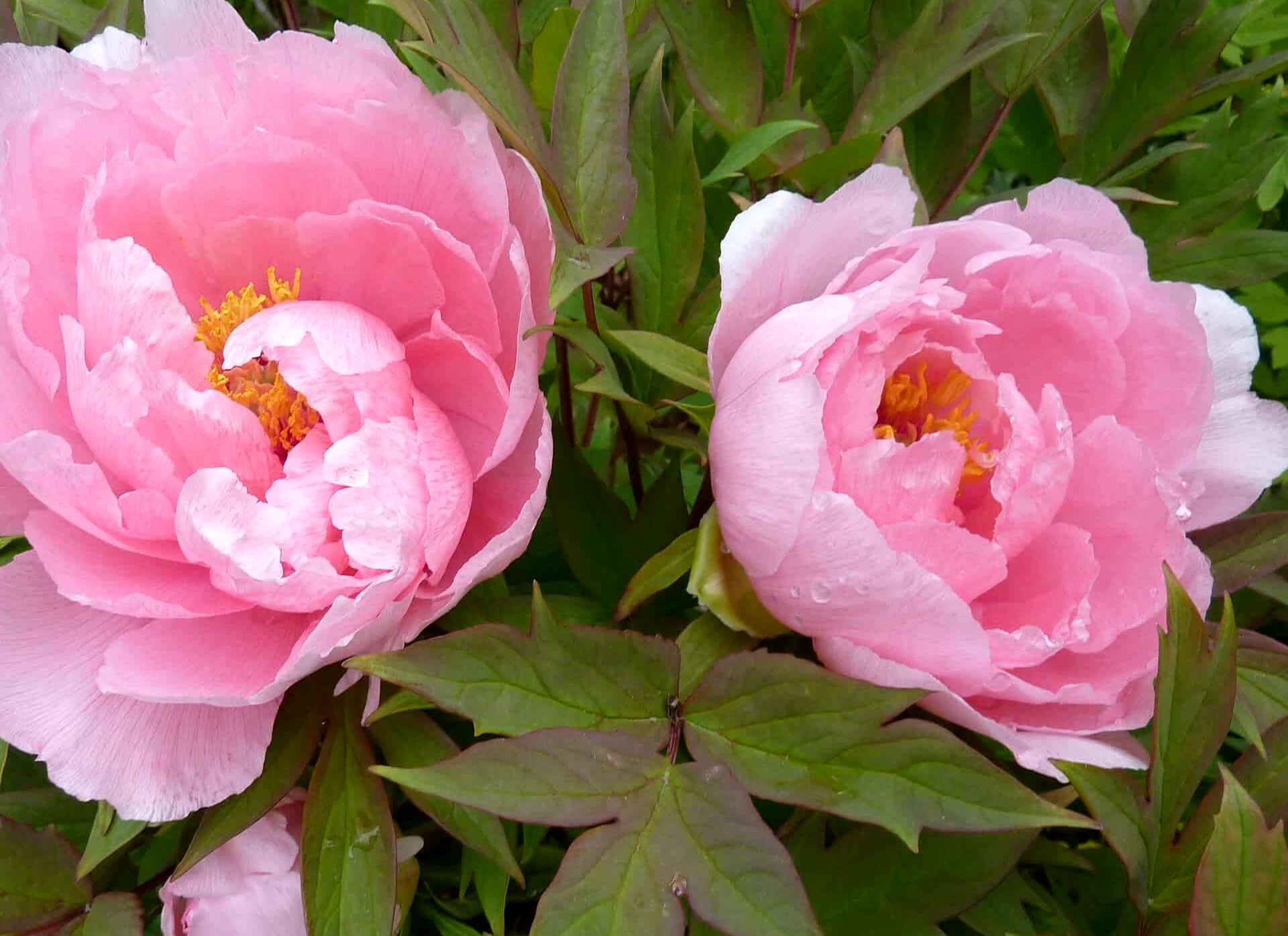
Another P. x suffruticosa cultivar with ruffled cherry pink flowers is a heavy bloomer. It also has an upright growth, reaching four feet tall.
High Noon
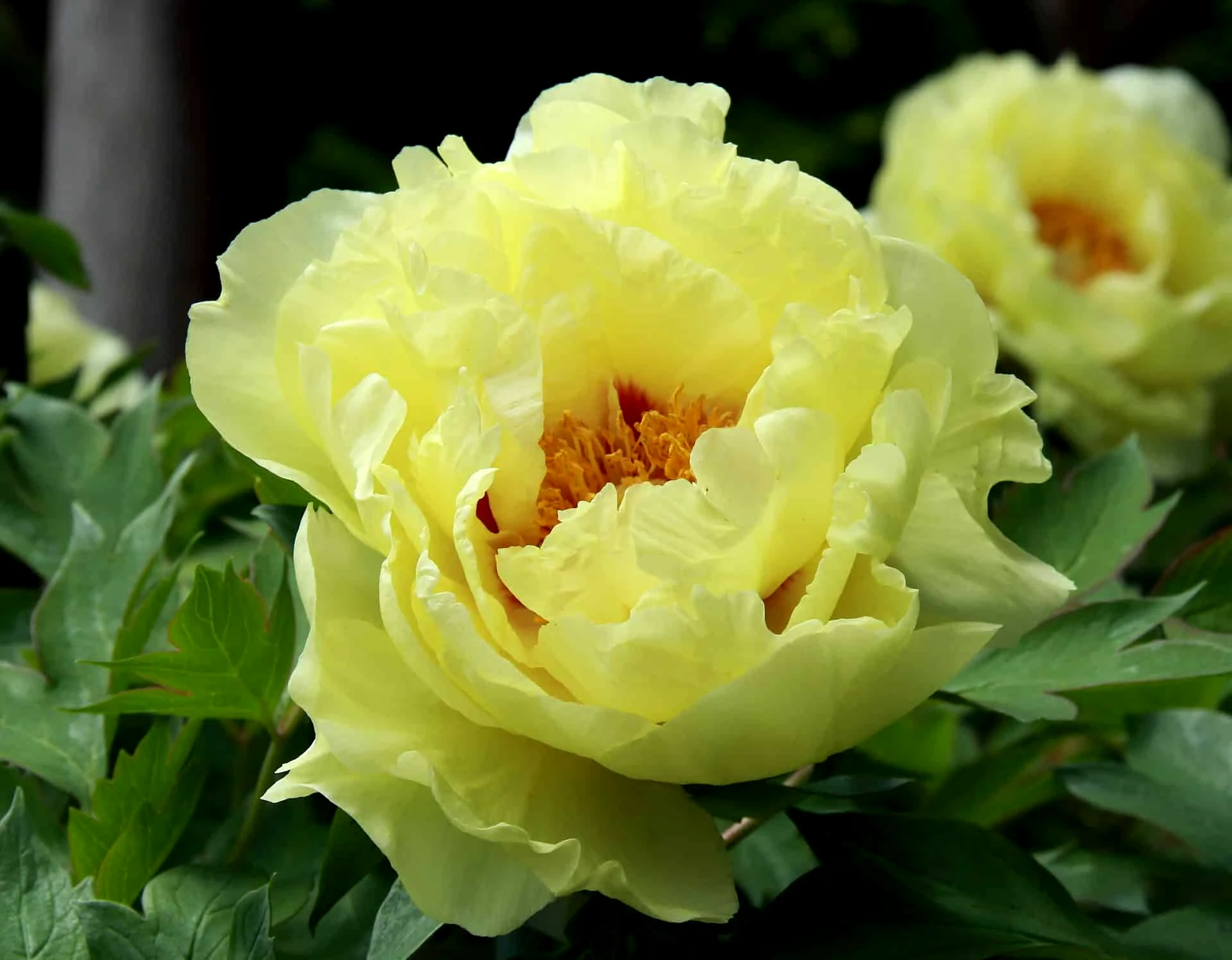
Growing tree peonies like High Noon display lemony yellow flowers with a flare of red in the center.
Manchurian Promise
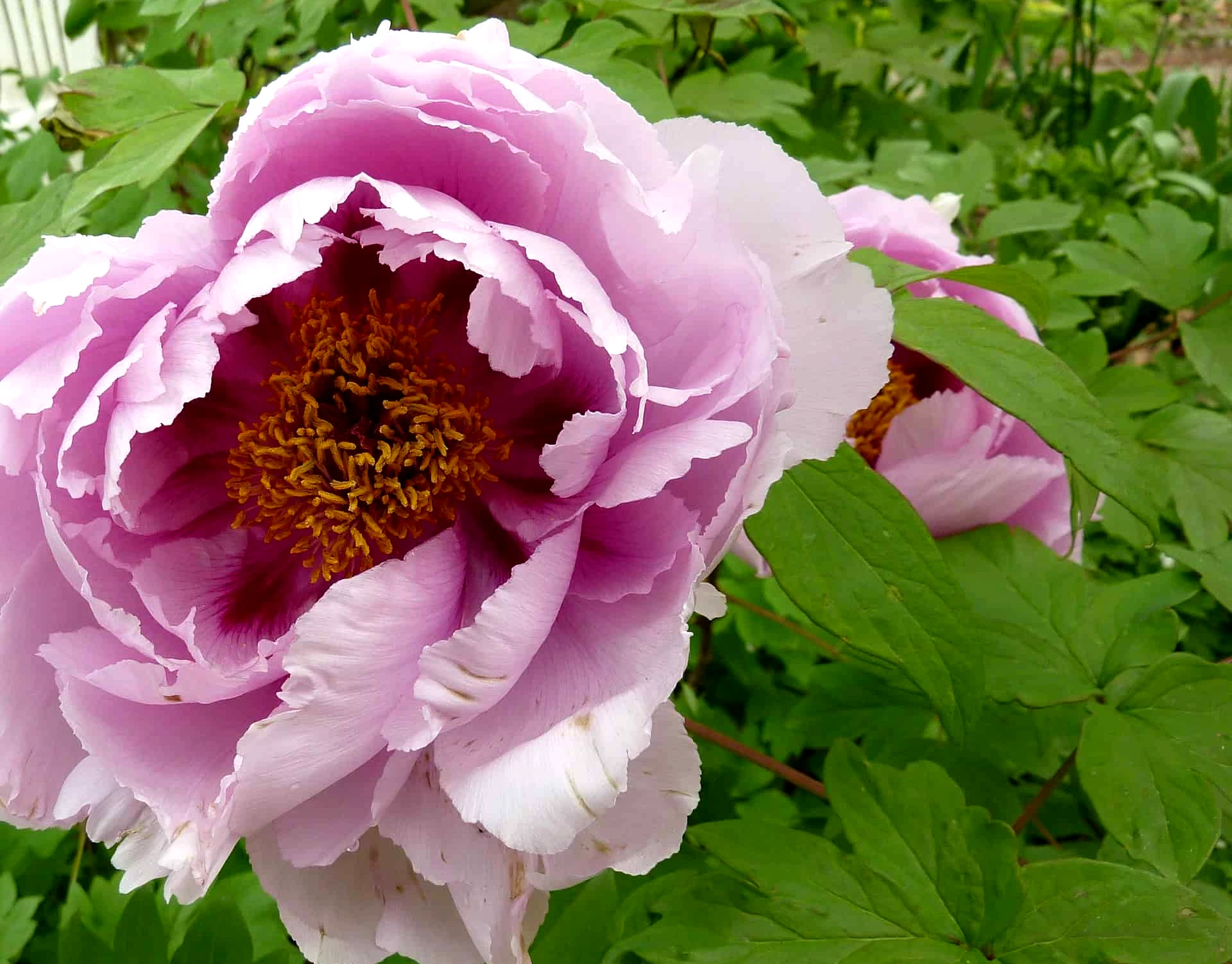
It is a Lutea hybrid with salmon-peach flowers and a maroon flare in the stamen. The blooms do not produce pollen and have a sweet fragrance.
Shimadaijin
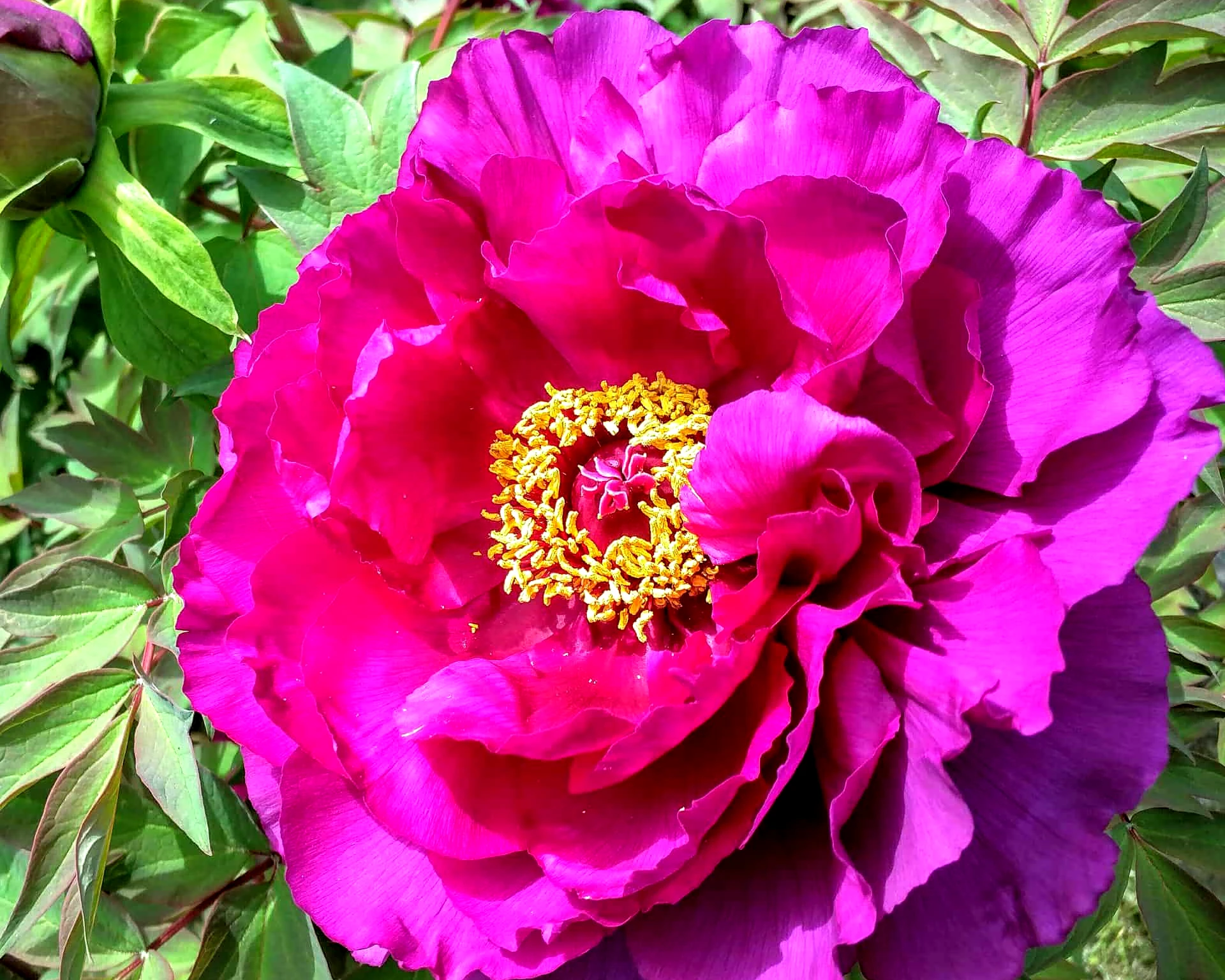
‘Shimadaijin,’ aka ‘Island Minister,’ comes from Japan with purple-red ruffled blooms with a sweet, spicy fragrance.
Common Pests and Diseases
Like most plants, tree peonies are not free from pests or diseases. In some regions, your plant can become the food for deer and rabbits. However, nematodes are the primary pests feeding on your herbaceous peony.
Infestations happen when there is high humidity during hot summers and notify you when the leaves discolor, turning yellow to purple or brown. The best is to remove the infested foliage, spray some insecticidal soap, and use it in the soil. Pruning tree peonies with regular maintenance can help prevent this from happening.
To prevent infestations, you can use Neem oil spray on your plants. Neem oil can help gardeners to keep their ornamentals looking great. For severe infestations, it helps to remove the entire plant. Regarding tree peony care, these are hardy plants but can get their fair share of fungal diseases.
First, you get a fungal canker disease affecting woody plants, killing the branches and weakening your plant. Then, you notice discolored lesions on the stems and trunk with leaf spots and flower buds falling off.
Pruning tree peony-infected parts to dispose of helps ensure your plant has enough air circulation moving through the foliage. Treat your plant with a fungicide. Other diseases are gray mold, peony leaf spots, powdery mildew, and root and stem rot.
Frequently Asked Questions
Deadheading peony flowers is essential to help promote healthy growth and reblooming.
Tree peonies are characterized by woody stems that remain above ground throughout the year, unlike herbaceous peonies whose stems die in winter. Tree peonies also tend to have larger, more substantial blooms.
The size of tree peonies can vary depending on the specific cultivar, but they generally reach 3 to 7 feet (0.9 to 2.1 meters) with a similar spread. Some cultivars can grow even taller.
Tree peonies are not necessarily challenging to grow but have specific requirements. They thrive in well-drained soil, prefer full sun to partial shade, and benefit from proper pruning and maintenance.
Yes, it is possible to grow tree peonies in containers. Use a large container with good drainage, and provide them with the right soil mix and adequate space for the roots to grow. Container-grown tree peonies may require extra care in terms of watering and winter protection.
Tree peonies are generally hardy but benefit from winter protection in colder climates. You can apply a layer of mulch around the base of the plant and wrap the shrub in burlap to shield it from harsh winter conditions.
Whether you want to buy, sell, or simply reach out to other plant enthusiasts, Plantly is the right place to be!
-
Free Shipping$9.99Sold By: Succulent Oasis
In stock
Medium Succulent Plant – Silver Coral
Rated 4.84 out of 5 based on 352 customer ratings01Sold By: Succulent Oasis -
$25.30Sold By: Carlo's Plant Farm
In stock
Summer Sunset Jasmine | Carlo`s Plant Farm
Rated 5.00 out of 5 based on 22 customer ratings00Sold By: Carlo's Plant Farm -
$35.99Sold By: Carlo's Plant Farm
In stock
2 JASMINE DOWNY – LIVE STARTER PLANTS LESS THAN 12 INCHES TALL
Rated 5.00 out of 5 based on 22 customer ratings00Sold By: Carlo's Plant Farm -
Free Shipping$9.09Sold By: CZ Grain
In stock
fairy dust hibiscus
Only 898 available and it’s in 1 people’s basketRated 4.60 out of 5 based on 156 customer ratings00Sold By: CZ Grain
